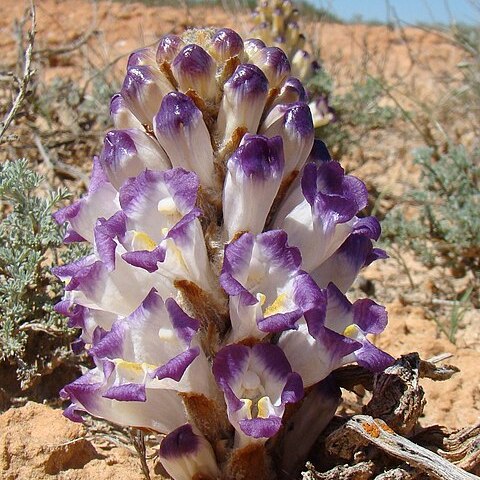A parasite. It grows on Chenopodiaceae. It grows on the roots of shrubs and grasses. It is a stout, rough plant 10-30 cm high. The stems are fleshy and cylinder shaped. They are yellow and do not branch. They are 5-20 mm across. They are covered with bracts. The flowers are yellowish-purple. They are in crowded spikes 5-20 cm long at the top of the plant. The fruit is an oval capsule. There are many small seeds.

